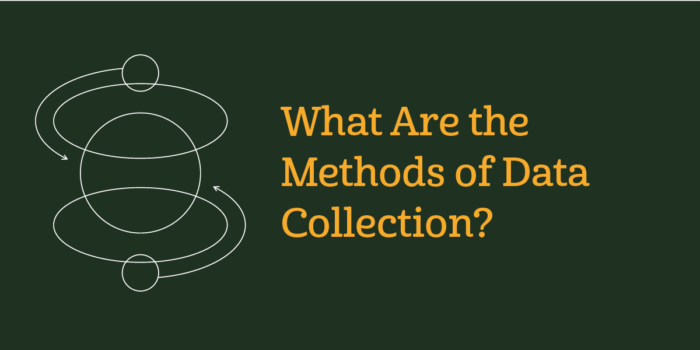
Data is one of the most precious resources in today’s business landscape. The more information you have about your customers, the better you can understand their interests, wants and needs. This enhanced understanding helps you meet and exceed your customers’ expectations and allows you to create messaging and products that appeal to them.
But here’s the question — What is the data collection methodology, and how do you collect this data? This is where a data collaboration platform (DCP) and a customer data platform (CDP) come into play.
While both CDPs and DCPs contribute to data collection, they have different data collection mechanisms and objectives. A CDP collects individual-level customer data for a comprehensive understanding, while a DCP collects aggregated data for audience segmentation, data collaboration and targeted advertising.
In some cases, organizations may choose to integrate both a CDP and a DCP to leverage the strengths of each platform and create more effective marketing strategies. By leveraging these techniques, you can gain deeper insights into your customers and unlock opportunities for growth.
Below, we explore the various ways to collect data using your DCP, the uses of data collection and the most common methods of data collection. So, whether you’re a seasoned marketer or just starting out, get ready to broaden your horizons and take your data-driven initiatives to new heights.
Primary Data Collection Definition
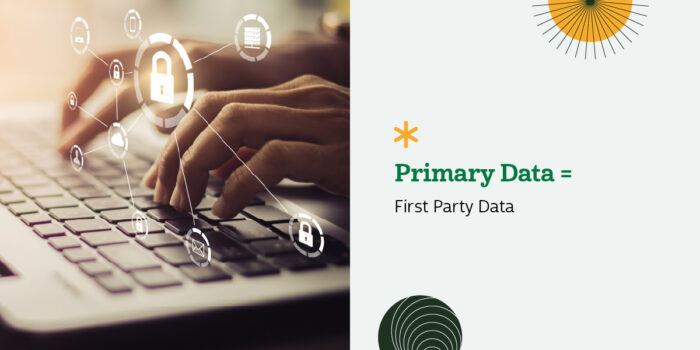
When it comes to data collection methods, understanding the concept of primary data is essential. So, what exactly is primary data collection?
The term “primary data” refers to data you collect yourself rather than data you gather after another party initially recorded it. Primary data is information obtained directly from the source. You will be the first party to use this exact set of data. As the first party to utilize this specific set of data, you have full control over its collection and use.
When it comes to data businesses collect about their customers, primary data is also typically first-party data. First-party data is the information you gather directly from your audience. It could include data you gathered from online properties, data in your customer relationship management system or non-online data you collect from your customers through surveys and various other sources.
Because first-party data comes directly from your audience, you can have high confidence in its accuracy, as well as its relevance to your business. This data holds great value as it provides insights into the behaviors, preferences and characteristics of your customers.
While first-party data forms the foundation of your data set, it’s important to recognize that different types of data have their own unique advantages and use cases. In some instances, supplementing your first-party data with second-party or third-party data can enhance the scale of your audience or help you reach new target segments.
However, in this article, our focus will be on primary data collection. Why? Because primary data is the data you gather yourself, and it requires a well-defined strategy to ensure its effectiveness and accuracy.
To leverage primary data effectively, you need to consider various methods of data collection. By carefully planning and executing your primary data collection efforts, you can obtain valuable insights that directly align with your marketing objectives.
Secondary Data Collection Definition
Now that we have a better understanding of primary data collection, we can dive deeper into secondary data collection.
Second-party data is the first-party data of another company. You can use second-party data through data collaboration by sharing it directly from the organization that collected it. Second-party data has many of the same positive attributes as first-party data. It comes directly from the source, so you can be confident in its accuracy, but it also gives you insights you couldn’t get with your first-party data.
Additionally, second-party data provides you with insights you may not have been able to obtain solely from your first-party data. It offers a fresh perspective and expands your understanding of your target audience.
In comparison, third-party data is information a company has pulled together from numerous sources and consolidated into a comprehensive data set. You can buy and sell this kind of data on a data exchange, and it typically contains a large number of data points.
Third-party data offers much more scale than any other type of data, which is its primary benefit. This expanded scale opens up opportunities to explore new audiences, uncover market trends and identify patterns that can shape your marketing strategies.
When considering your data collection methods, it’s crucial to understand the differences between first-party data, second-party and third-party data. Each type of data brings its own strengths and benefits to the table, depending on your specific goals and requirements.
Quantitative vs. Qualitative Data
You can divide primary data into two categories: quantitative and qualitative.
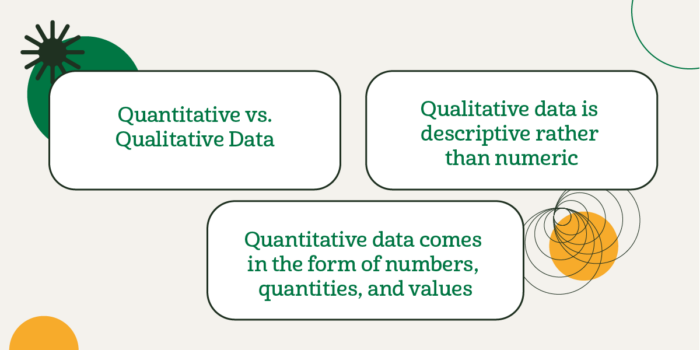
Quantitative data comes in the form of numbers, quantities and values. It describes things in concrete and easily measurable terms. Examples include the number of customers who bought a given product, the rating a customer gave a product out of five stars and the amount of time a visitor spent on your website.
Because quantitative data is numeric and measurable, it lends itself well to analytics. When you analyze quantitative data, you may uncover insights that can help you better understand your audience. Because this kind of data deals with numbers, it is very objective and has a reputation for reliability.
Qualitative data is descriptive, rather than numeric. It is less concrete and less easily measurable than quantitative data. This data may contain descriptive phrases and opinions. Examples include an online review a customer writes about a product, an answer to an open-ended survey question about what type of videos a customer likes to watch online and the conversation a customer had with a customer service representative.
Qualitative data helps explains the “why” behind the information quantitative data reveals. For this reason, it is useful for supplementing quantitative data, which will form the foundation of your data strategy. Because quantitative data is so foundational, this article will focus on collection methods for quantitative primary data.
This article will primarily focus on collection methods for quantitative primary data. However, it’s important to recognize the value of qualitative data and consider employing qualitative data collection methods to gather additional insights that enrich your understanding of your audience and enhance your marketing strategies.
By leveraging both qualitative and quantitative data collection methods, you can paint a comprehensive picture of your target audience, uncover actionable insights and make informed decisions that drive your marketing and advertising initiatives.
How to Collect Data in 5 Steps
There are many different techniques for collecting different types of quantitative data, but there’s a fundamental process you’ll typically follow, no matter which method of data collection you’re using. This process consists of the following five steps.
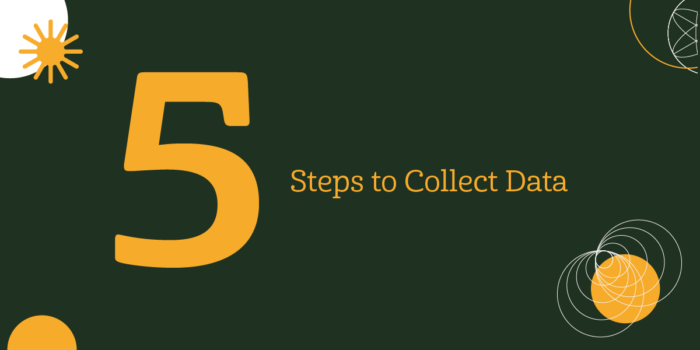
1. Determine What Information You Want to Collect
The first step in collecting data is determining the specific information you want to gather. By defining your data objectives, you can focus your efforts on collecting relevant and actionable data. This initial step sets the direction for your data collection process, enabling you to gather insights that align with your marketing and advertising goals.
As an example, you may decide to collect data about which type of articles are most popular on your website among visitors who are between the ages of 18 and 34. You might also choose to gather information about the average age of all of the customers who bought a product from your company within the last month.
2. Set a Timeframe for Data Collection
Setting a timeframe for data collection is a crucial step in the data collection process. It provides structure and ensures you gather data within a specific period. The timeframe you establish will depend on the nature of your data objectives. This timeframe helps you stay organized and focused, allowing you to gather data within the designated period and make informed decisions based on timely insights.
For ongoing data collection, such as transactional data or website visitor data, setting up long-term tracking methods is essential. In comparison, if you’re collecting data for a specific campaign, you’ll have a defined start and end date for data collection.
3. Determine Your Data Collection Method
Each data collection method has its strengths and limitations, and choosing the appropriate one ensures you gather accurate and relevant data. The method you select will depend on factors such as your research objectives, target audience, available resources and the nature of the data you’re collecting.
We’ll go over various methods you can use in the next section of this article.
4. Collect the Data
This next step involves implementing your chosen data collection techniques, whether it’s through surveys or interviews. You can store and organize your data in your DCP. Be sure to stick to your plan and check on its progress regularly.
Create a schedule for when you will check in with how your data collection is proceeding, especially if you are collecting data continuously. Also, make updates to your plan as conditions change and you get new information.
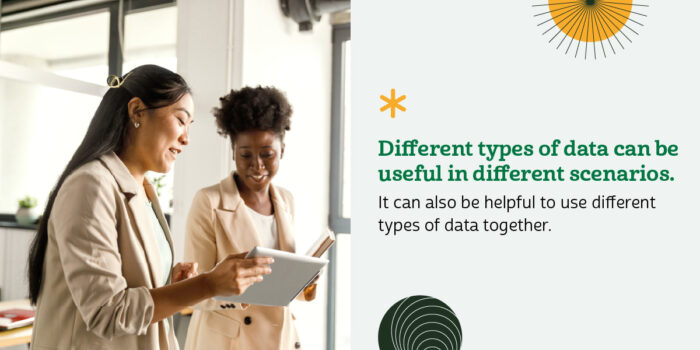
5. Analyze the Data and Implement Your Findings
Analyzing the data you’ve collected and implementing your findings is a crucial step in the data collection process. These insights give you a deeper understanding of your target audience, their preferences and their behaviors. Armed with this knowledge, you can make informed decisions and implement strategies to enhance your marketing and advertising efforts.
You can use the analytics tools built into Lotame’s end-to-end data collaboration platform, Spherical, to help with this step. Once you’ve uncovered the patterns and insights in your data, you can implement the findings to improve your business.
7 Data Collection Methods
So, how do you go about collecting the data you need to meet your goals? There are various methods of collecting primary, quantitative data. Some involve directly asking customers for information, some involve monitoring your interactions with customers and others involve observing customers’ behaviors.
The right one to use depends on your goals and the type of data you’re collecting. Here are some of the most common types of data collection used today.
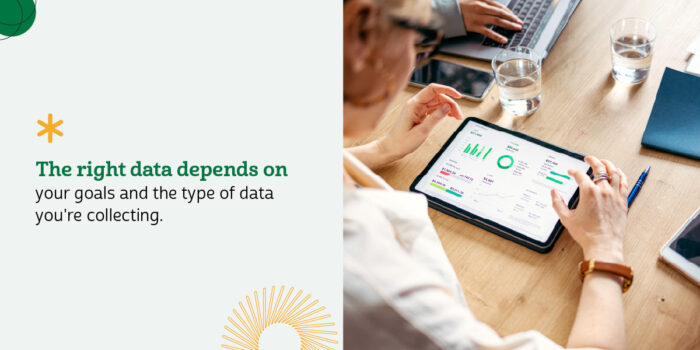
1. Surveys
Surveys are a versatile and widely used data collection method. Surveys offer a direct line of communication with your audience, enabling you to gather specific data tailored to your research objectives. You can use them to collect either quantitative or qualitative data or both. A survey consists of a list of queries respondents can answer in just one or two words and often gives participants a list of responses to choose from.
You can conduct surveys online, over email, over the phone or in person. One of the easiest methods is to create an online survey you host on your website or with a third party. You can then share a link to that survey on social media, over email and in pop-ups on your site — making it convenient for respondents to participate and share their insights.
2. Online Tracking
Online tracking is a powerful data collection method that leverages the digital footprint of your website and app visitors. When someone visits your website, they create as many as 40 data points. Accessing this data allows you to see how many people visited your site, how long they were on it, what they clicked on and more. Your website hosting provider may collect this kind of information, and you can also use analytics software.
You can also place pixels on your site, allowing it to place and read cookies to help track user behavior. Lotame specializes in assisting with this online data collection process, ensuring you can maximize the potential of your digital platforms to gather valuable customer data.
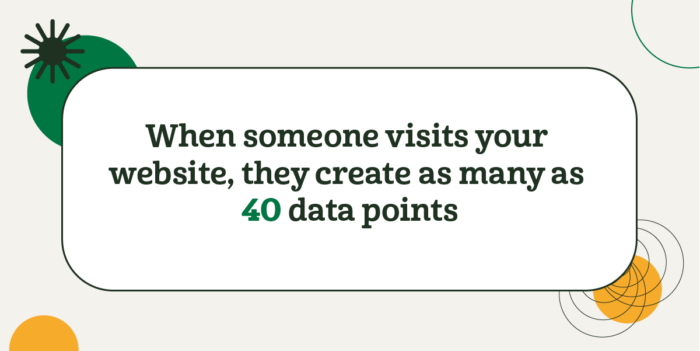
3. Transactional Data Tracking
Whether you sell goods in-store, online or both, your transactional data can give you valuable insights about your customers and your business.
Transactional data tracking lets you understand customer behavior, purchasing patterns and popular products. By harnessing the power of transactional data tracking, you can make informed business decisions and tailor your strategies to better serve your customers.
This type of data collection can also open up other types of monetization opportunities, such as offering up a retail media network.
4. Online Marketing Analytics
Online marketing analytics is a powerful data collection method that helps you gather insights about your campaigns, whether you run them on search, webpages, email or elsewhere. You can even import information from offline marketing campaigns that you run. The software you use to place your ads will likely give you data about who clicked on your ads, what times they clicked, what device they used and more.
By utilizing tools like our Audience Analytics, you can track the performance of your online ads and campaigns. Additionally, integrating data from offline sources, such as customer feedback on how they discovered your brand, into your CDP, DCP, or data collaboration platform enhances your understanding of the overall marketing effectiveness. With online marketing analytics, you can optimize your strategies and make data-driven decisions to achieve better marketing outcomes.
5. Social Media Monitoring
Social media monitoring is a valuable data collection method that allows you to tap into the wealth of customer information available on various social media platforms. By analyzing your follower list and examining the characteristics and interests of your audience, you can gain valuable insights into your target market. Social media monitoring enables you to understand your audience better, refine your marketing strategies and engage with your customers more effectively.
You can also monitor mentions of your brand on social media by regularly searching your brand’s name, setting up alerts or using third-party social media monitoring software. Many social media sites will also provide you with analytics about how your posts perform. Third-party tools may be able to offer you even more in-depth insights.
6. Collecting Subscription and Registration Data
Offering customers something in return for providing information about themselves can help you gather valuable customer data. You can do this by requiring some basic information from customers or site visitors who want to sign up for your email list, rewards program or another similar program.
When individuals willingly subscribe to your newsletters or register on your website, they demonstrate a genuine interest in your brand. This data, often referred to as zero party data, is highly valuable because it comes from engaged users who are more likely to convert. When designing your data collection forms, strike the right balance between requesting enough information to be useful without overwhelming potential participants.
7. In-Store Traffic Monitoring
If you have a brick-and-mortar store, you can also gather insights from monitoring the foot traffic there. The most straightforward way to do this is with a traffic counter on the door to help you keep track of how many people come into your store throughout the day. This data will reveal what your busiest days and hours are.
It may also help give you an idea about what is drawing customers to your store at certain times. You can also install security systems with motion sensors that will help you track customers’ movement patterns throughout your shop. The sensor can provide you with data about which of your store’s departments are most popular.
5 Uses of Data Collection
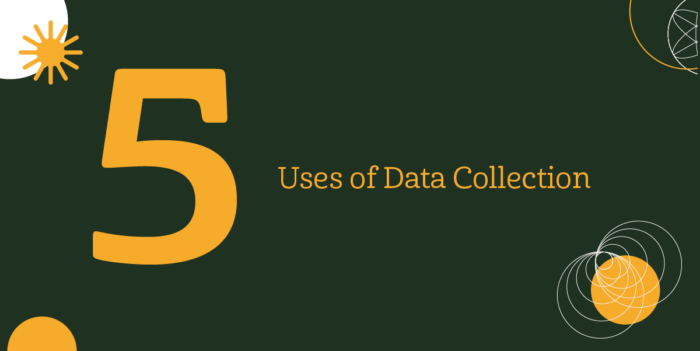
Collecting data through various data collection methods is valuable because it allows you to make informed decisions. The more relevant, high-quality data you have, the more likely you are to make good choices when it comes to marketing, sales, customer service, product development and many other areas of your business.
Let’s explore some specific uses of data collection that can benefit your organization.
1. Improving Your Understanding of Your Audience
It can be challenging to understand every one of your customers personally — especially if you run a large business or an online business. Data collection methods provide valuable insights that can significantly improve your understanding of your audience. By gathering data through surveys, online tracking or transactional data tracking, you can uncover valuable information about your customers’ demographics, preferences, interests and behavior.
This knowledge allows you to tailor your marketing strategies, personalize your communications and deliver products and services that resonate with your target audience. Understanding your audience better enables you to build stronger relationships and meet their expectations effectively.
Through the primary data collection methods described above, you can learn about who your customers are, what they’re interested in and what they want from you as a company.
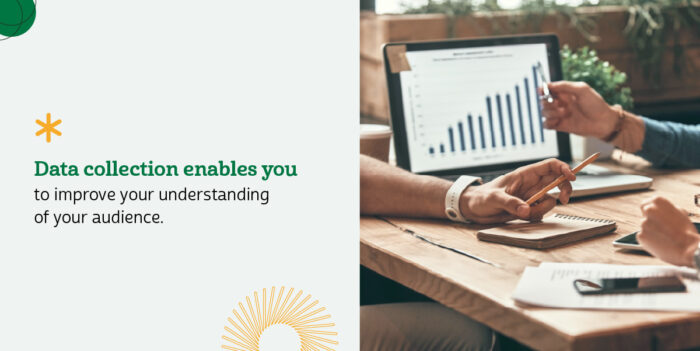
2. Identifying Areas for Improvement or Expansion
Data collection is a powerful tool for identifying areas where your business can improve or expand. By analyzing data, you gain valuable insights into your company’s performance and customer feedback.
Looking at transactional data, for example, can show you which of your products are the most popular and which ones do not sell as well. This information might lead you to focus more on your bestsellers and develop other similar products. You could also look at customer complaints about a product to see which aspects are causing problems.
Moreover, data can help you identify expansion opportunities by examining customer demographics and preferences. This allows you to make informed decisions about product expansion or opening new locations based on existing customer concentration.
Data is also useful for identifying opportunities for expansion. For example, say you run an e-commerce business and are considering opening a brick-and-mortar store. If you look at your customer data, you can see where your customers are and launch your first store in an area with a high concentration of existing customers. You could then expand to other similar areas.
3. Predicting Future Patterns
Data collection and analysis empower you to predict future patterns, providing you with a competitive advantage. By examining trends in your data, you can anticipate shifts in customer preferences and behaviors.
As you look at the data for your new website, for instance, you may discover videos are consistently increasing in popularity, as opposed to articles. This observation would lead you to put more resources into your videos. You might also be able to predict more temporary patterns and react to them accordingly.
Additionally, data allows you to predict seasonal patterns, such as color preferences in fashion, enabling you to stock the right products at the right time. If you run a clothing store, you might discover pastel colors are popular during spring and summer, while people gravitate toward darker shades in the fall and winter. Once you realize this, you can introduce the right colors to your stores at the right times to boost your sales.
Furthermore, individual-level predictions based on data insights help you proactively address customer needs, such as offering timely tech support for software updates. With data-driven predictions, you can stay ahead of the curve and optimize your strategies for future success.
4. Better Personalizing Your Content and Messaging
When you know more about your customers or site visitors, you can tailor the messaging you send them to their interests and preferences. This personalization applies to marketers designing ads, publishers choosing which ads to run and content creators deciding what format to use for their content.
Using data collection in marketing can help you craft ads that target a given audience. For example, say you’re a marketer looking to advertise a new brand of cereal. If your customer data shows most people who eat the cereal are in their 50s and 60s, you can use actors in those age ranges in your ads.
If you’re a publisher, you likely have information about what topics your site visitors prefer to read about. You can group your audience based on the characteristics they share and then show visitors with those characteristics content about topics popular with that group.
You can even go further with personalization by adjusting your site’s experience to the individual’s experience. You can use cookies to determine when someone is revisiting your site or have them log in to confirm their identity and access their personalized user experience.
5. Improving Targeted Advertising With Retail Media Networks
Retail media networks (RMNs) have revolutionized data collection in marketing and advertising. These networks, driven by retail giants like Amazon, Walmart and Tesco, harness the power of first-party data to offer targeted advertising solutions.
By tapping into the rich pool of first-party data generated through online purchases and in-store loyalty programs, RMNs provide brands with precise targeting capabilities. They analyze this valuable data to deliver highly targeted campaigns, making them an invaluable tool for marketers. With a mix of display and sponsored search ads across various platforms, RMNs enable brands to reach their target audience at the right moment, driving impactful results — like better engagement and conversion rates.
Get Data Empowered with Spherical
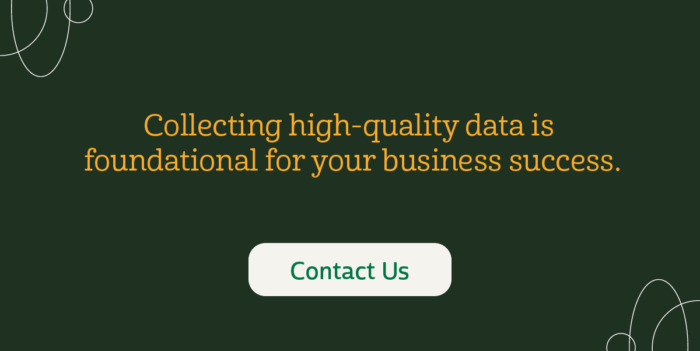
Collecting high-quality data is foundational for your business’ success. As we’ve explored throughout this article, there are various data collection methods, ways to collect data and uses of data collection that can benefit your organization. When it comes to effectively gathering, organizing, analyzing and activating your data, Lotame stands out from the crowd.
Lotame understands the importance of data collection methods and how they impact your business. Our end-to-end data collaboration platform, Spherical, empowers digital marketers and media owners to drive growth and revenue with actionable customer intelligence, data informed audiences, and identity powered activation. Lotame ensures your data collection strategy is Data Empowered. Learn more about Spherical and how we can help you onboard, connect, enrich, and activate both known and unknown data in smarter, faster, and easier ways.